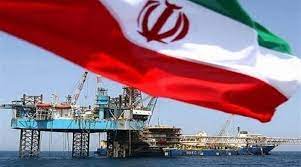Iran, which has gained an exemption from OPEC cuts deal due to U.S. sanctions, increased production to 3.05 million barrels per day (bpd) in October, as pipeline issues that affected production and exports in September were resolved, according to a survey conducted by S&P Global Commodity Insights Platts.
Production is now at a five-year high, increasing significantly since sanctions pressure eased after Russia-Ukraine war.
OPEC+ crude oil output grew 180,000 bpd in the mentioned month, adding supply pressures to flagging market sentiment, as Iran and Iraq led the group’s production higher.
As reported, OPEC’s 13 members pumped 27.89 million bpd, up 130,000 bpd month on month, while 10 non-OPEC allies, including Mexico, which is not subject to a quota, boosted production by 50,000 bpd to 14.82 million bpd.
On October 29, the spokesman of the Iranian Oil, Gas and Petrochemical Products Exporters’ Union said that Iran’s oil production has increased to 3.4 million barrels per day, despite the U.S. sanctions aimed at curbing oil exports and the associated revenue to Iran’s government.
“The latest reports show that Iran’s oil production has increased to 3.4 million barrels per day, while it was about 2.9 million barrels per day until recently,” Hamid Hosseini told IRNA.
Given that previously closed oil wells have been reopened and returned to the production cycle, Iran can increase its oil production to 3.8 million bpd, he said.
“If we seek to increase oil exports from 3.8 million barrels per day to 4.2 million bpd in the 7th National Development Plan, we need to invest an average of $25,000 for each barrel of oil, but now, because these oil wells had been in production cycle previously, we have the opportunity to increase the oil production to 3.8 million barrels per day,” he explained.
Hosseini also said that about 40,000 bpd have been added to the country’s oil production from the Sepehr and Jafir oilfields, which can help with the economic growth of the country.
Iran produced 3.058 million barrels per day of crude oil in September, registering a 15,000-bpd increase compared to the previous month, according to OPEC’s latest monthly report.
Based on secondary sources, Iran produced 3.043 million bpd of crude oil in August.
The Islamic Republic’s average crude output for the third quarter of 2023 stood at 2.990 million bpd indicating a 292,000-bpd increase compared to the figure for the second quarter of the year, the report said.
The report put the average Iranian crude output for 2022 at 2.554 million bpd, while the average output in 2021 was 2.392 million bpd.
These statistics show that although with the re-imposition of the U.S. sanctions, Iran’s oil production decreased; gradually the country has been able to compensate for the output decline and increase production significantly.
Iran now occupies the third place among OPEC members in terms of production, following Saudi Arabia, and Iraq.
The country’s heavy crude oil price also increased by $7.05 in September, to register an 8.0 percent rise compared to the previous month, according to the OPEC report.
Iran sold its heavy crude oil at $94.63 per barrel in the mentioned month, compared to August’s $87.58 per barrel.
The country’s average heavy crude price was $82.37 since the beginning of 2023 up to the report’s publishing date, in comparison to $104.16 in the previous year’s same period.

 Iran Energy News Oil, Gas, Petrochemical and Energy Field Specialized Channel
Iran Energy News Oil, Gas, Petrochemical and Energy Field Specialized Channel



